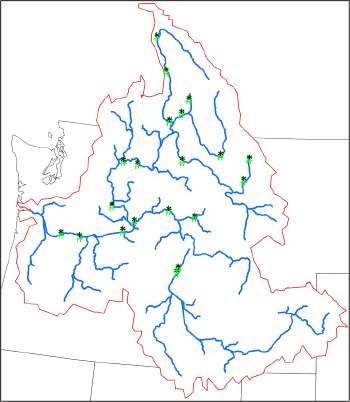The Columbia Simulation Reservoir Model (ColSim)
|
The Columbia River basin water supply is heavily managed to satisfy multiple objectives such as flood control, hydropower generation, recreational needs, environmental needs and agriculture. The Columbia Simulation Reservoir Model (ColSim) (Hamlet et al. 1999) has representations of the key physical characteristics and operations of the Columbia River basin water resources system and simulates the reservoir operations in the basin. In addition to the Columbia River mainstem , ColSim includes representations of the Snake, Kootenai, Clark Fork and Pend Oreille tributaries. Other smaller tributaries such as Yakima are ignored. The model runs at a monthly time step and uses routed, bias corrected VIC-simulated streamflow as its input. The operation rules of the water resources system that existed in 1999 were used in Hamlet et al. (1999) and have been minimally modified since to capture important changes to the operating rules ( as per personal communication with Alan Hamlet). ColSim assumes a perfect knowledge of expected future flows in a given year.
|
 Schematic of the locations of reservoirs modeled in ColSim (Hamlet et al. 1999).
|
Reference:
Hamlet, A. F. and Lettenmaier, D. P., 1999. 'Effects of Climate Change on Hydrology and Water Resources in the Columbia River Basin', J. Amer. W. Res. Assn. 35 (6), 1597–1623
|

